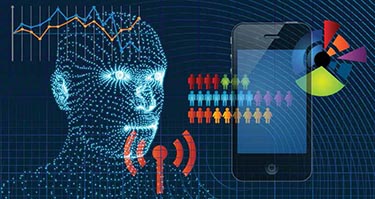As digital signage evolves, some technologies are being built into the screens while others are still third-party addons. No matter the add-on, combining the technologies with other data gathered can help content producers, and marketers hone the message.
Biometrics: People hear “facial recognition” and eyebrows are raised. But facial recognition combined, when combined with other technologies such as motion sensors and information gathered from data analytics, can be a particularly powerful tool. Highly targeted content can be served on the digital sign to target one person or a group. Content can be served based on various demographics such as age, gender, and even emotions (e.g., happy, sad, excited). For planning purposes, data gathered from all these sources can help decide where to place additional signs or perhaps move the location, and how to fine tune content and marketing.
Beacon Technologies: According to a recent Business Insider report, the U.S. install base for active beacons will reach 4.5 million by the end of 2018, with 3.5 million used in retail. Beacons are transmitted via Bluetooth Low Energy (BLE) on a user’s smartphone or tablet and needs an app to locate and react to beacons. Even though this takes an action from the user to opt-in to receive messaging from the beacon, the barrier to entry is low for retailers or companies looking to send targeted messaging. There are many low-cost, battery-powered beacon products available with many under $10 each. Beacons have a range of as much as 150 feet.
Using beacons in combination with digital signage and can create even more touch-points.
Near Field Communications (NFC) differ from beacons in that the range is “near,” needing the user to be a few inches away or to “tap” the device. This is what is commonly used in “tap-to-pay.” Other common applications would be to tap a way-finding display or kiosk to retrieve directions, or at visitor centers to receive information gathered on-site.
